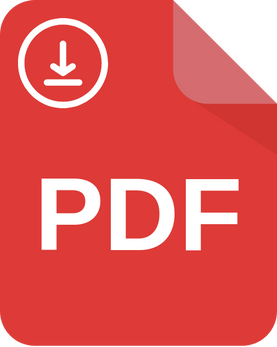
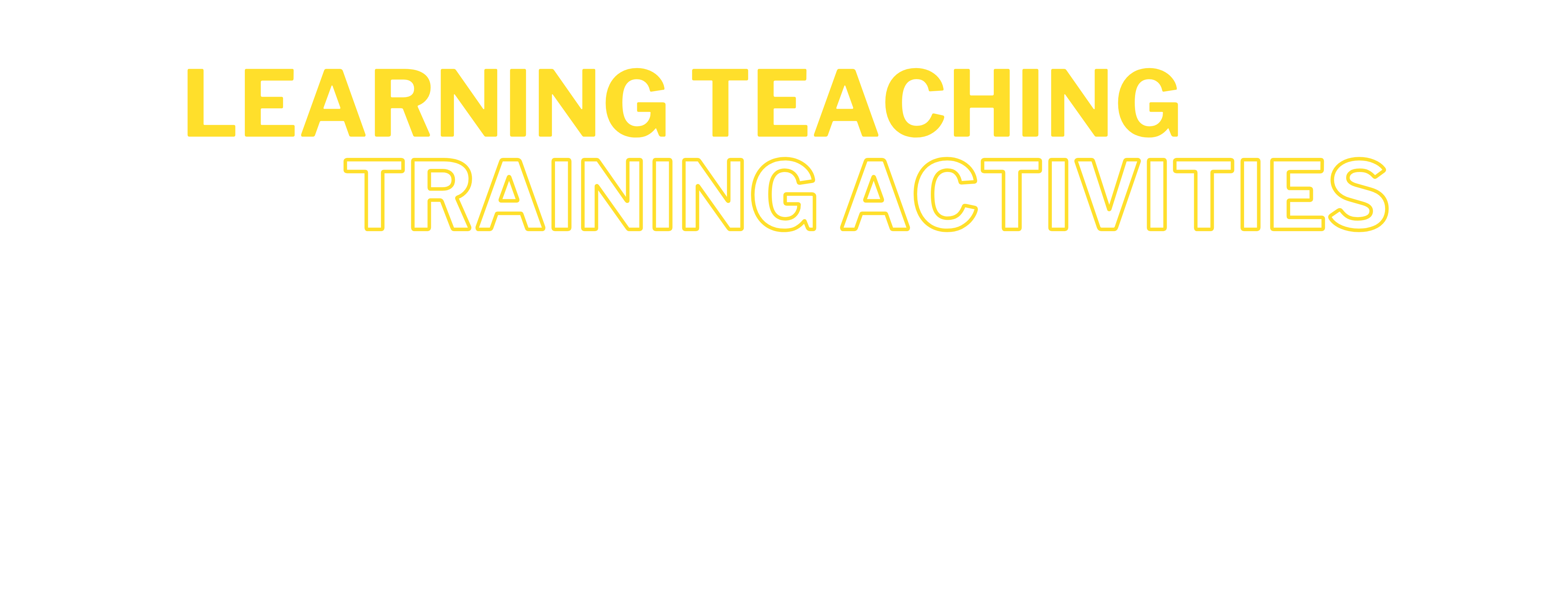

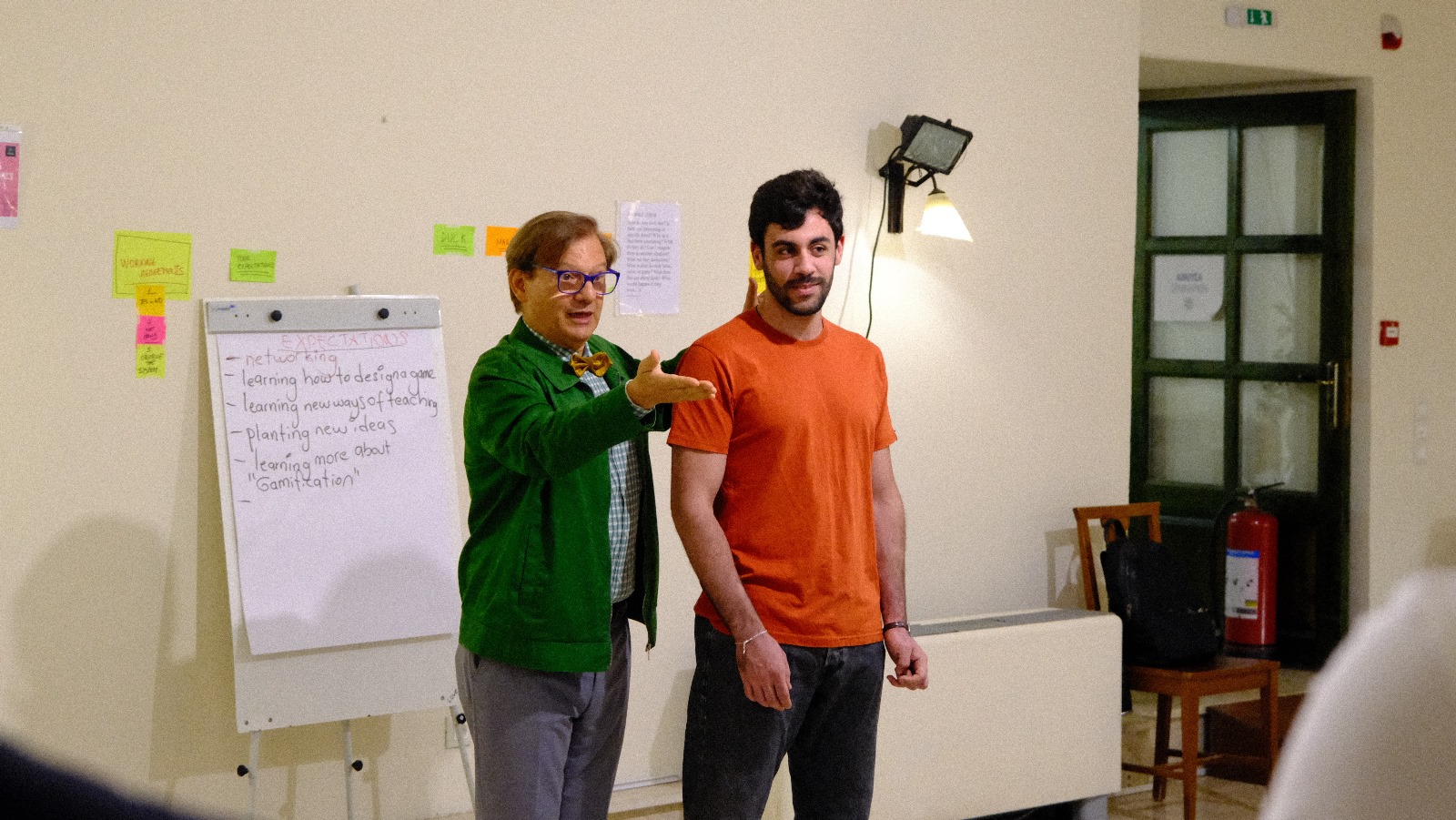
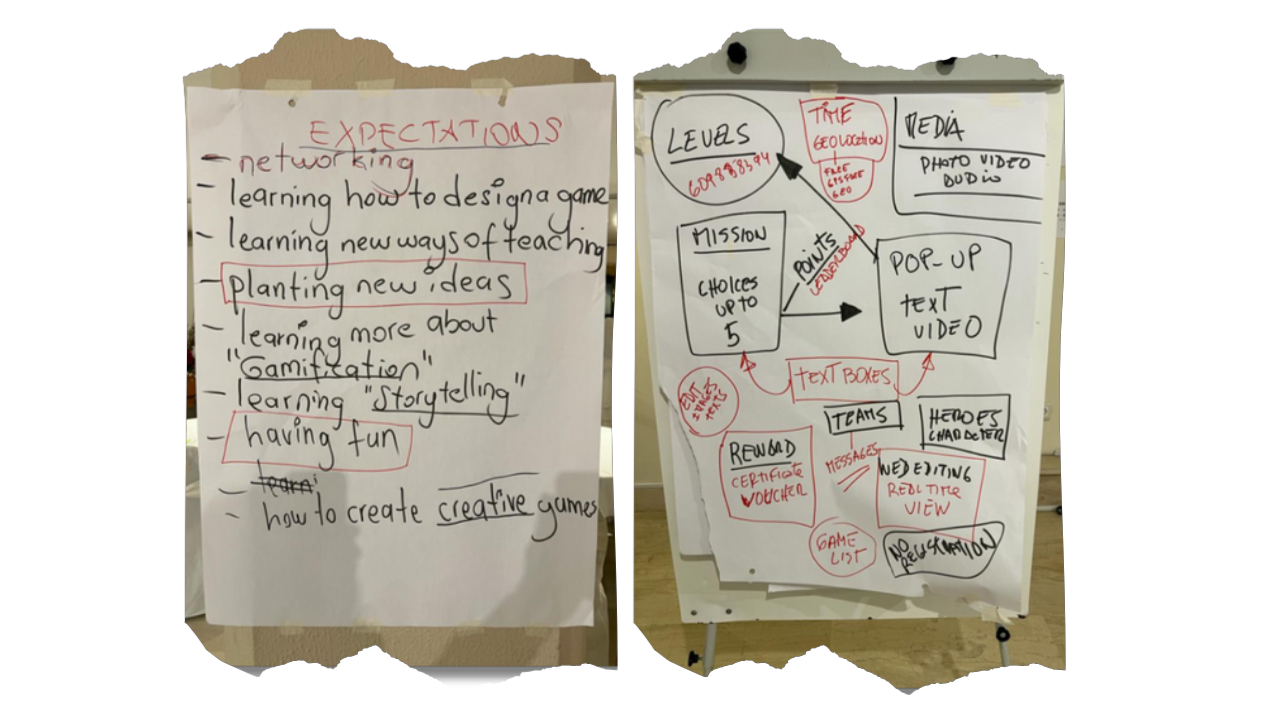
EXPECTATIONS
"Expectations" was the topic of the first session for the GET2ACTION project. With the guidance of the trainer, the participants got to know each other. Then he wanted to know what our expectations were for the project. The diversity of expectations was great! Participants from 6 different countries expressed their expectations about the project. We should share a few of these great ideas: how to design games, how to learn new ways of teaching, how to create creative games, and how to do storytelling. Some wanted just to have fun, while others expected unforgettable cultural interactions with each other. Some were hoping to discover more about effective youth projects, while others were looking forward to embrace the excitement of creative collaborations and networks.
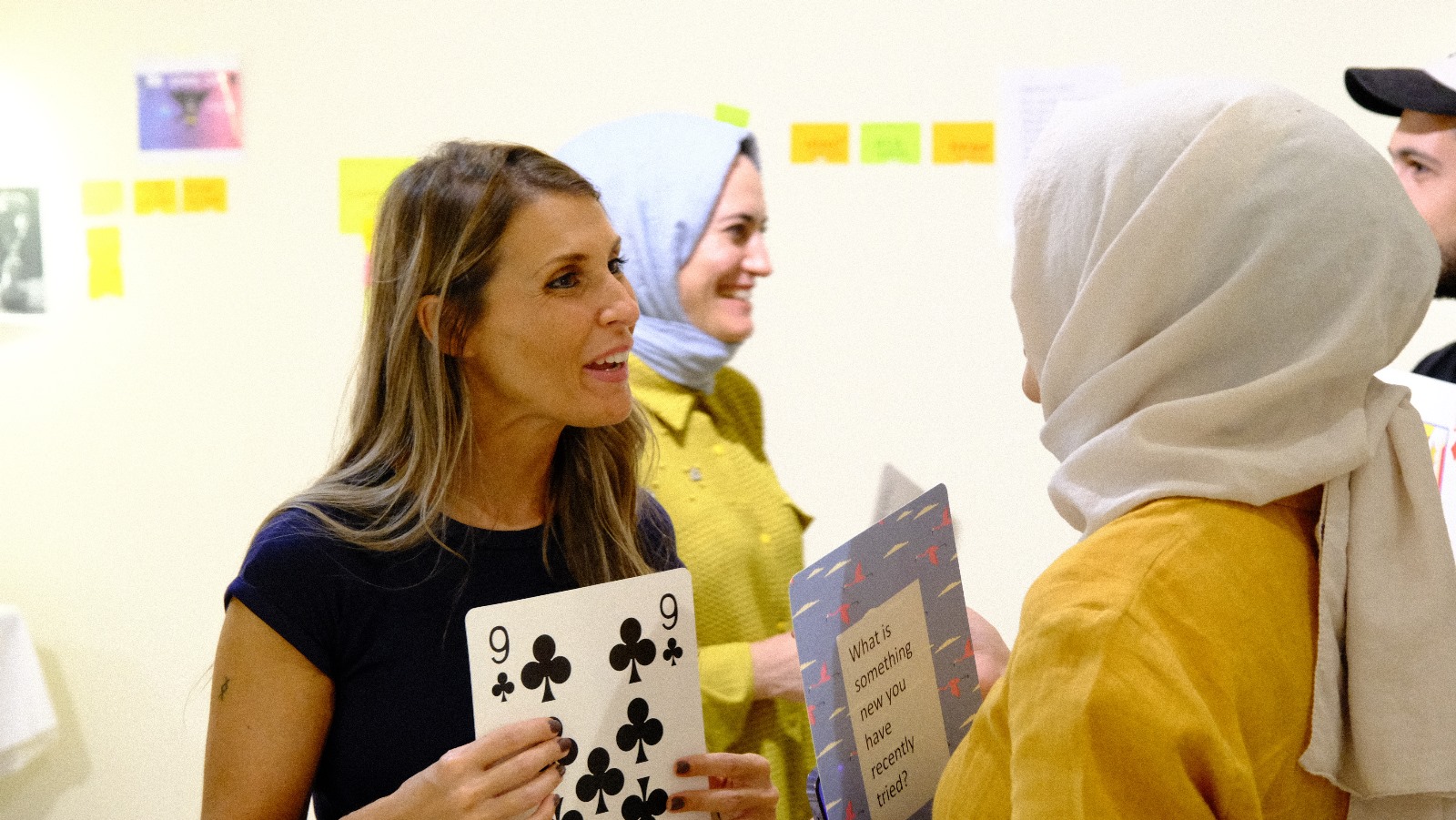
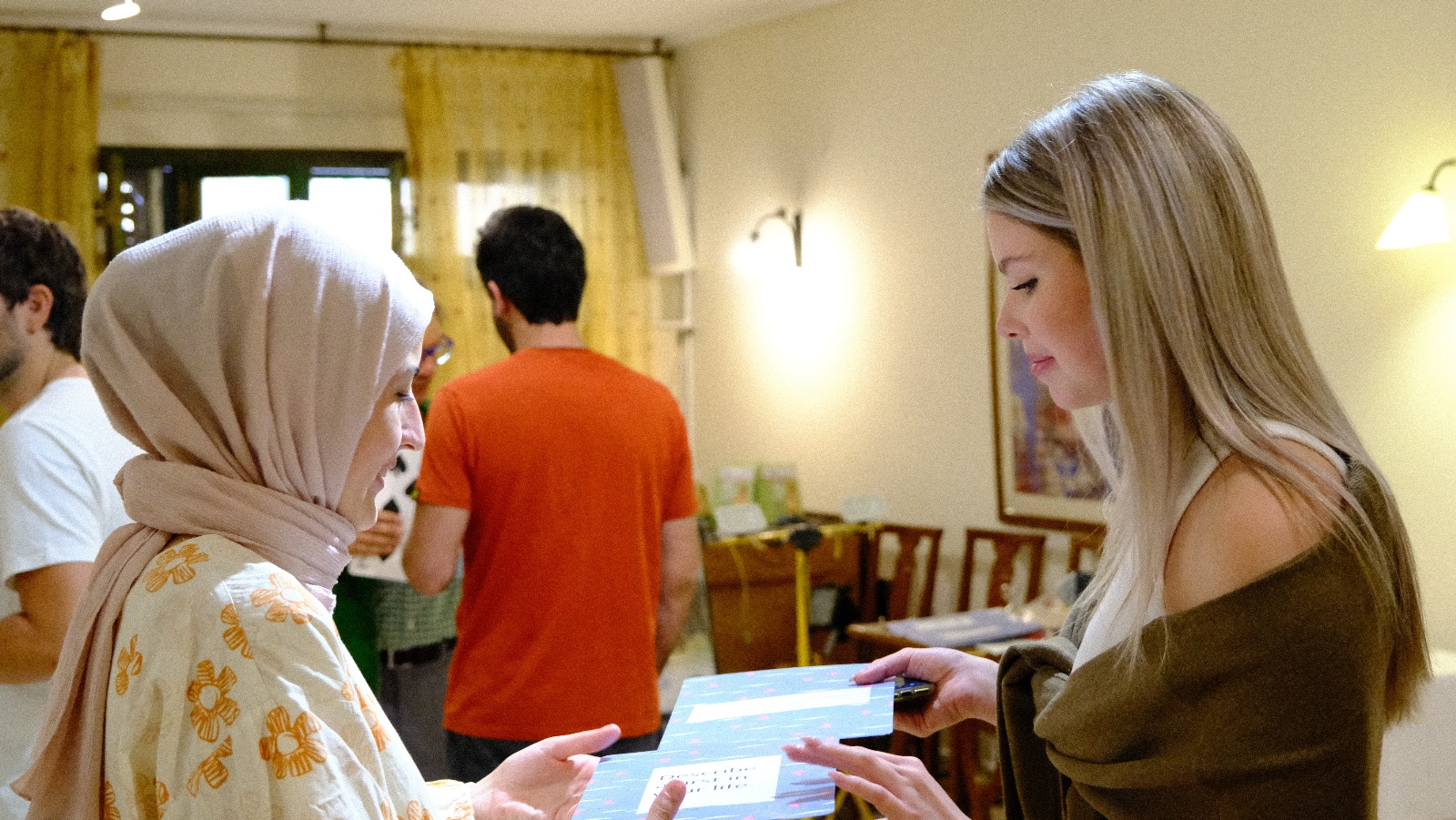
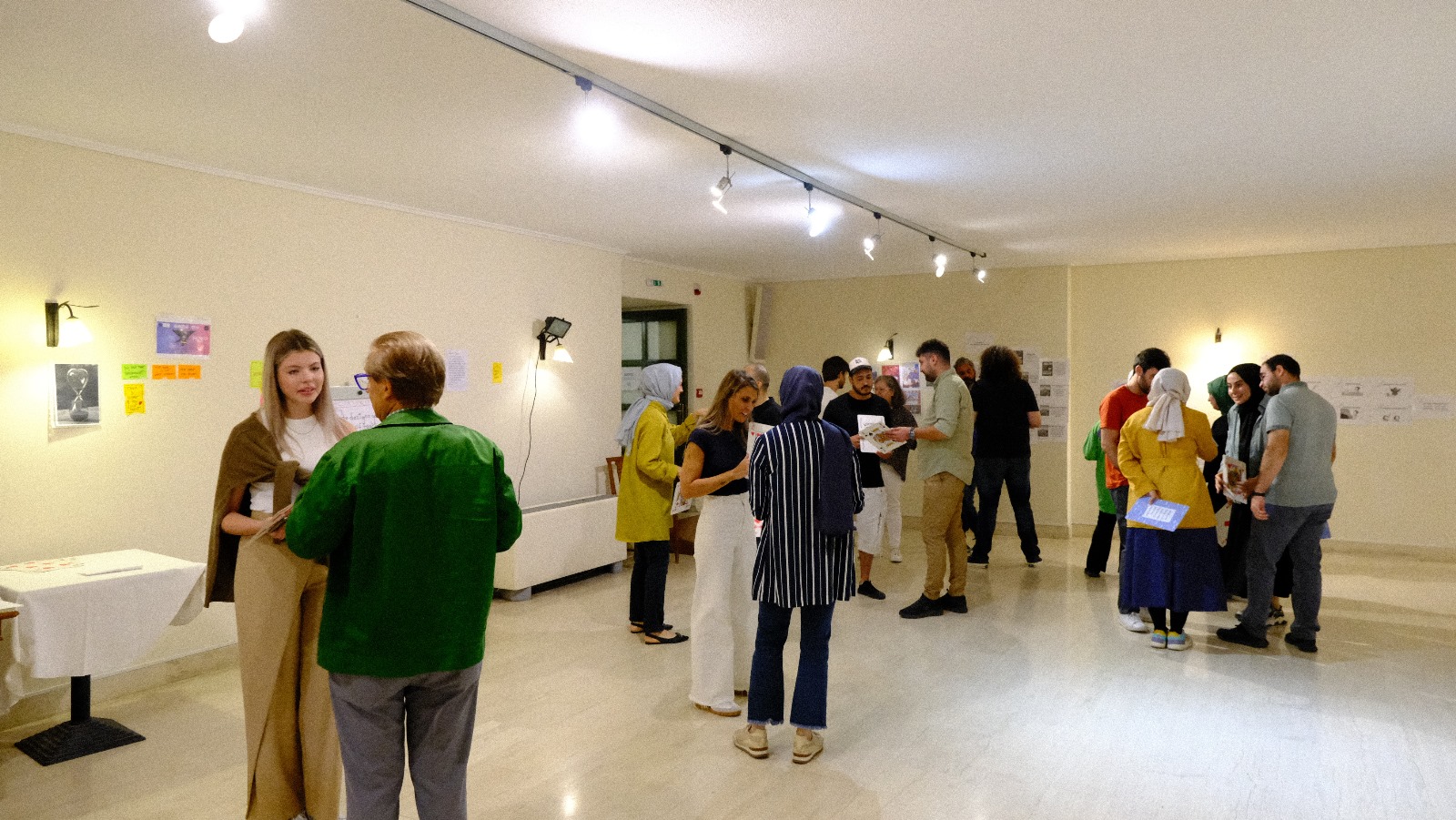

EMOTIONAL
EXCHANGE MARKET
We discovered each other's vulnerability with this activity. Each of us received a poker card with questions to exchange. We raised our hands, connected each other, and traded questions, just like in the old stock market shares. But only this time, it was feelings we exchanged. Deep, meaningful questions uncovered our vulnerability, enabling us to self-discover. We continued by changing our cards and raising our hands again for new partners to discover, helping us learn to reflect on ourselves. While answering unexpected questions, we get to know each other better and reflect on ourselves.
- What are some things you’ve had to unlearn?
- When was the last time you cried?
- What has been your biggest disappointment?
- What are you more aware of now?
- What did you learn about yourself and the team?
- If you have a magic wand what one thing would you change?
- What questions in your life is currently unresolved?
- Where did you find peace?
- What is something new you have recently tried?
- What life lesson do you wish everyone was taught at school?
- What would you have liked to have known beforehand?

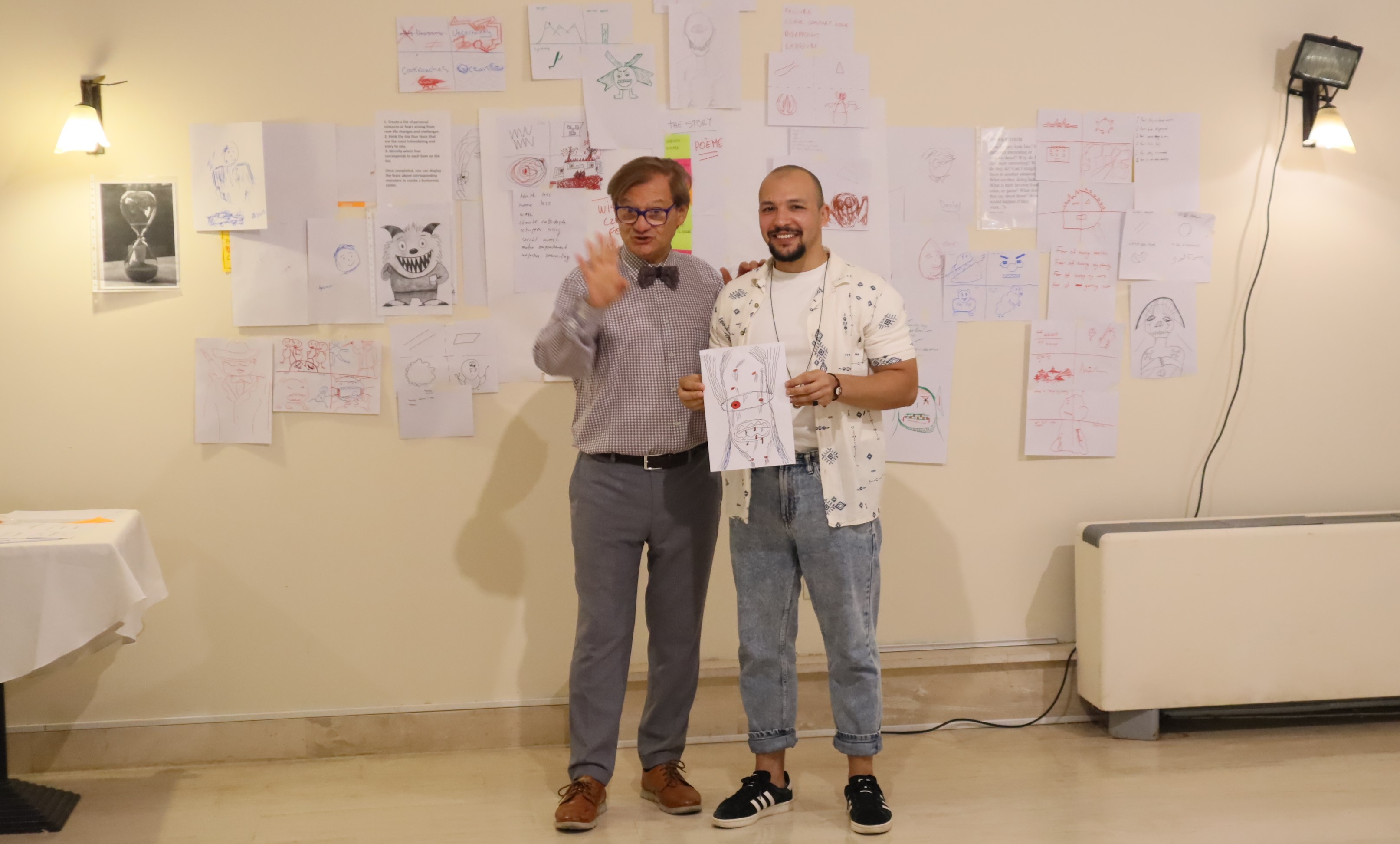

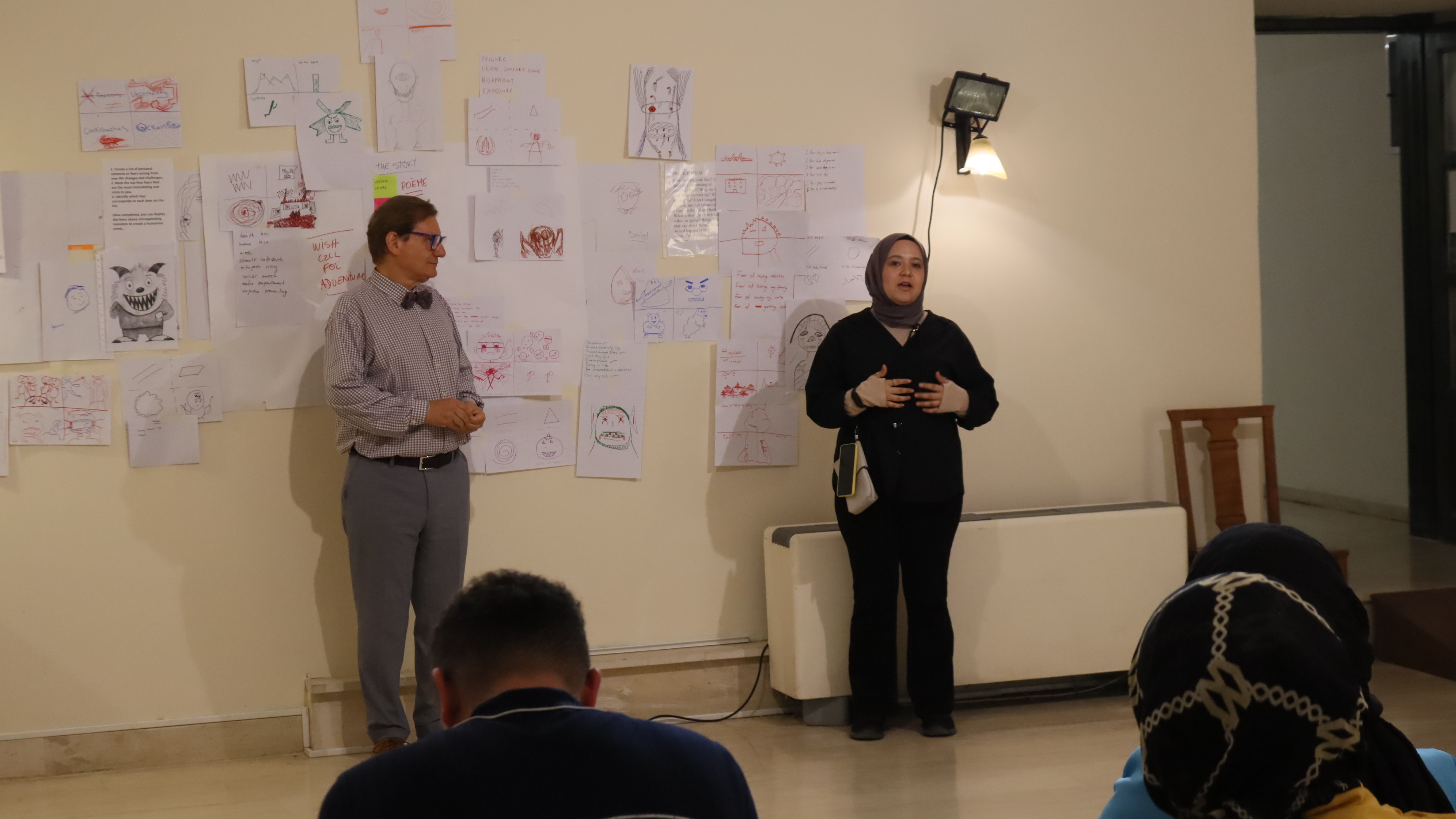
DRAWING MONSTERS
Drawing Monsters enables a safe space to surface and frees up options for conversations around our fears. It helps us to be aware and visible of our fears. It reveals incredible insights about issues that are difficult to talk about, and the environment of vulnerability brings a world of opportunity to people in this space. Drawing Monsters is an ideal exercise to uncover potential fears at the beginning and during any project implementation. It is suitable for adults and children, especially our children, which makes it ideal for the educational environment.
We drew our imaginary monsters on paper. Some of our monsters had scary teeth, some had crazy eyes, and some looked like a zombie with empty faces. Afterward, we placed our drawings on the wall for everyone to see. Sharing our monsters with each other felt like a step into vulnerability but in a safe and non-judgmental space. Explaining our monsters to one another allowed us to be aware about our fears and anxieties. We focused on understanding and empathizing with each other's fears. It made us feel SEEN and HEARD.
Structuring Invitations to Play
- What do we fear?
- How can we use that fear as a way to discover what to do next?
- To engage the ideas/skills/energy of those around us in those next steps?
- What is it you fear about _ (the focus of interaction at hand)
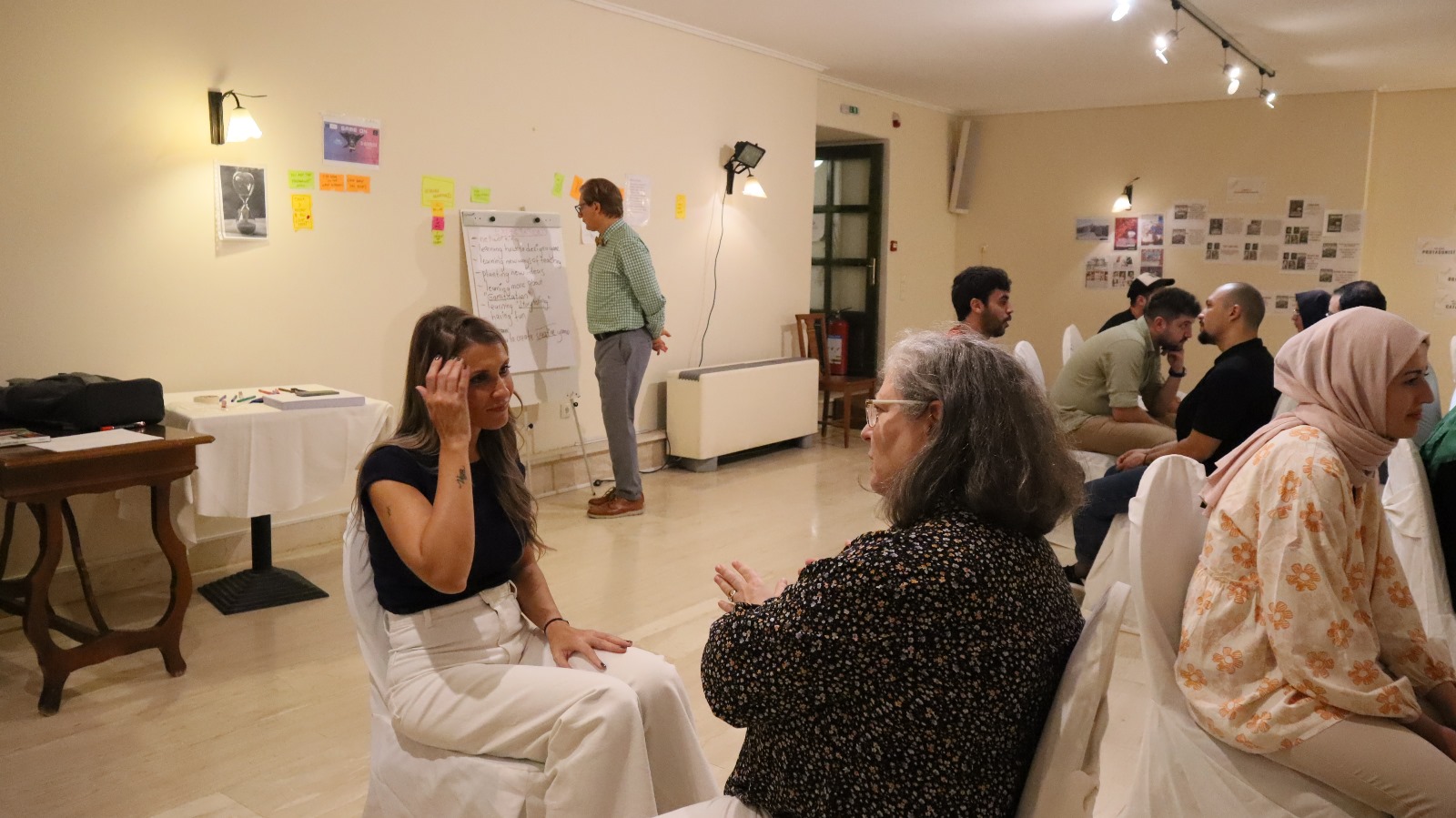



HEARD-SEEN-RESPECTED (HSR) Play, Fostering Empathy and Communication
During the LTTA event, another exercise was "Heard-Seen-Respected (HSR)" play, which was a significant activity within the GET2ACTION project. This activity involved participants asking each other the question, "Tell me about a time when you felt that you were not heard, seen, or respected." It was emphasized that during this activity, there would be no judgments, interpretations, or comments related to personal experiences. The primary purpose was for participants to actively listen to one another for a continuous 7-minute period, with the aim of feeling, hearing, and respecting each other's stories. This part of the meeting emphasized the importance of the HSR activity, which fostered empathy and understanding among participants. It was noted that empathy has the power to remove barriers to action and encourage an inclusive approach. Through this activity, participants learned to "walk in the shoes" of others, developing a deeper understanding of different perspectives. The meeting emphasized that in many situations, immediate solutions are lacking or clear resolutions are elusive, responding with empathy can improve the "cultural climate" and build trust among group members.
Five Structural Elements about HSR:
1. Structuring Invitation: Invite participants to tell a story to a partner about a time when they felt that they were not heard, seen, or respected. Ask the listeners to avoid any interruptions other than asking questions like “What else?” or “What happened next?”
2. How Space Is Arranged and Materials Needed? Chairs facing each other, a few inches between knees.
3. How Participation Is Distributed? Everyone has an equal amount of time, in turn, to participate in each role, as a storyteller and a listener
4. How Groups Are Configured? In pairs for the storytelling. Then foursomes for reflecting on what happened.
5. Sequence of Steps and Time Allocation The discussion highlighted that the HSR activity served to help individuals respond in ways that do not overpromise or overcontrol. It also assisted group members in recognizing and addressing unwanted patterns, ultimately leading to more productive interactions. Participants had the opportunity to practice and experience increased compassion, understanding, and the numerous benefits that emanate from such interactions. The discussion on the HSR activity and its significance concluded with a strong emphasis on the importance of empathy and compassionate communication within the GET2ACTION project.

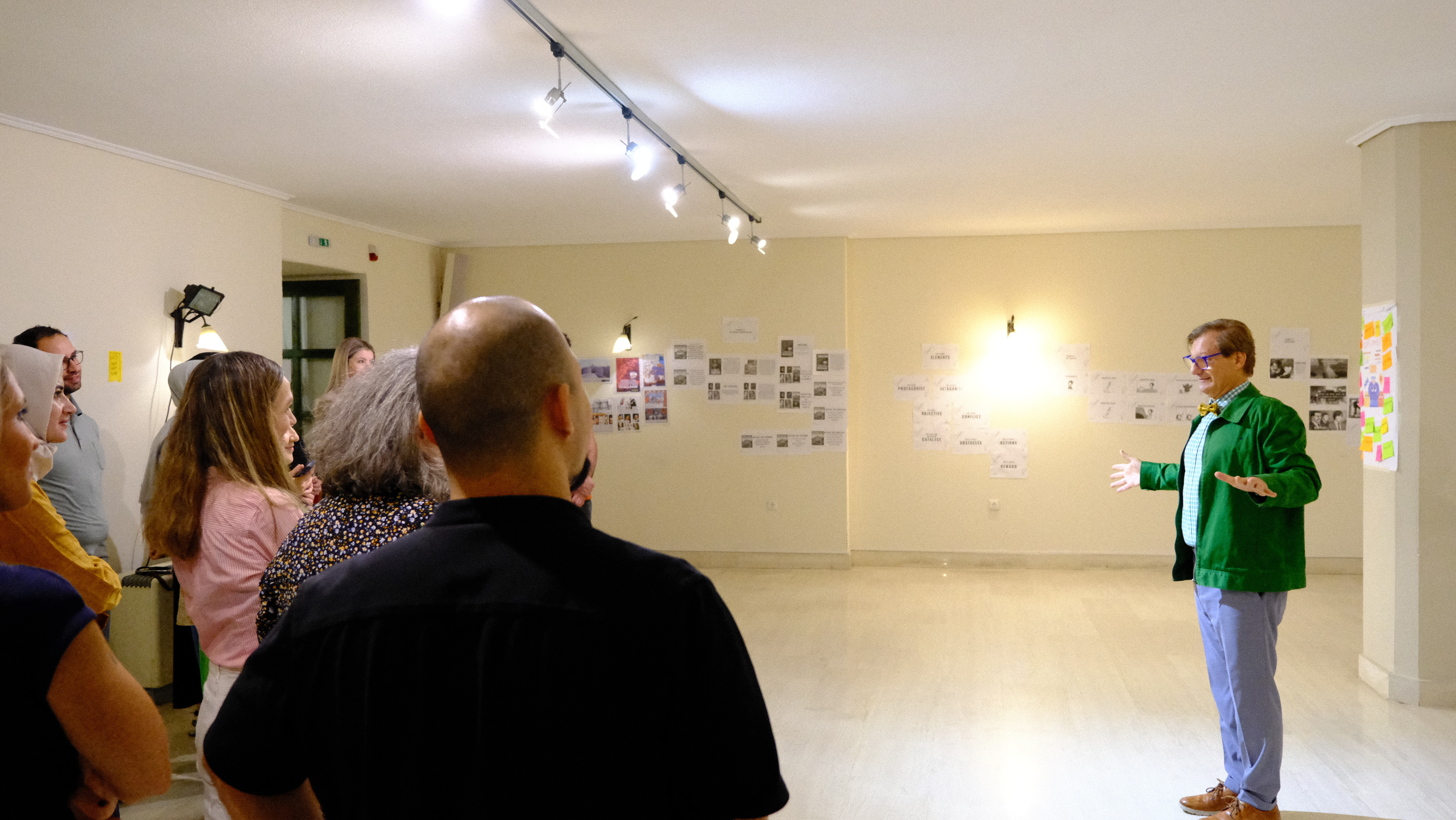



HERO'S JOURNEY
The meeting commenced with the aim of introducing and launching the "Hero’s Journey" exercise to the participants. The project's initial steps and objectives were discussed, as follows:
Brainstorming Heroes:
The concept of Joseph Campbell's monomyth, also known as the hero's journey, was introduced to the participants. It was explained that Campbell proposed that most great heroes follow this common path in their narratives. An overview of Campbell's stages of the hero's journey was provided.
The introduction of the hero's journey concept served to offer participants a framework for analyzing and understanding the hero's path in storytelling. It set the stage for deeper exploration and analysis of the chosen heroes' narratives.
The activity concluded with participants gaining a foundational understanding of the "Hero’s Journey" and its connection with storytelling and game design and its key elements, including hero selection, heroic qualities, identifying commonalities among heroes, and the introduction of Joseph Campbell's hero's journey.
The participants also engaged in a comprehensive discussion regarding the various sections of game design, which are integral to the GET2ACTION project. The key aspects of the game design process were explored, as follows:
Defining Hero/Protagonist/Antagonist Profiles and Goals/Wishes:
The discussion progressed to the stage of defining the key characters in the game, namely the hero, protagonist, and antagonist. This phase also involved outlining their individual goals and wishes, which would drive the narrative.
The definition of character profiles and their motivations was a crucial step in creating a compelling narrative and gameplay experience. It set the foundation for character-driven storytelling.
Developing the Plot and Conflict Using LOGLINE:
Participants delved into the process of developing the game's plot and conflict. The concept of a "logline" was introduced as a concise and powerful way to summarize the story. This stage aimed to craft a captivating and engaging narrative.
The development of the plot and conflict was a pivotal aspect of game design, as it would determine the storyline's depth and intrigue. The logline served as a tool to distill the essence of the game's narrative.
Determining Challenges for the Hero:
The meeting highlighted the importance of determining the challenges that the hero must overcome throughout the game. These challenges were regarded as obstacles that would add complexity and excitement to the gameplay.
The discussion emphasized that challenges were essential for player engagement and progression, as they would test the hero's abilities and decision-making.
Establishing the Call for Adventure or Catalyst:
The meeting continued with a focus on establishing the "call for adventure" or catalyst that propels the hero into the narrative. This event or trigger was presented as a critical element in the hero's journey.
The call for adventure or catalyst was described as the inciting incident that would set the game's events in motion and motivate the hero to embark on their journey.
Identifying Achievable Rewards:
The meeting concluded by emphasizing the significance of identifying the achievable rewards within the game. These rewards could include anything from in-game accomplishments to character growth or narrative outcomes.
The discussion highlighted that rewards were vital in motivating players and ensuring a satisfying gameplay experience. Rewards could serve as incentives for player engagement and progression.
The discussion on game design concluded with participants gaining a comprehensive understanding of the essential elements of the game development process, from character profiles to plot development and rewards.
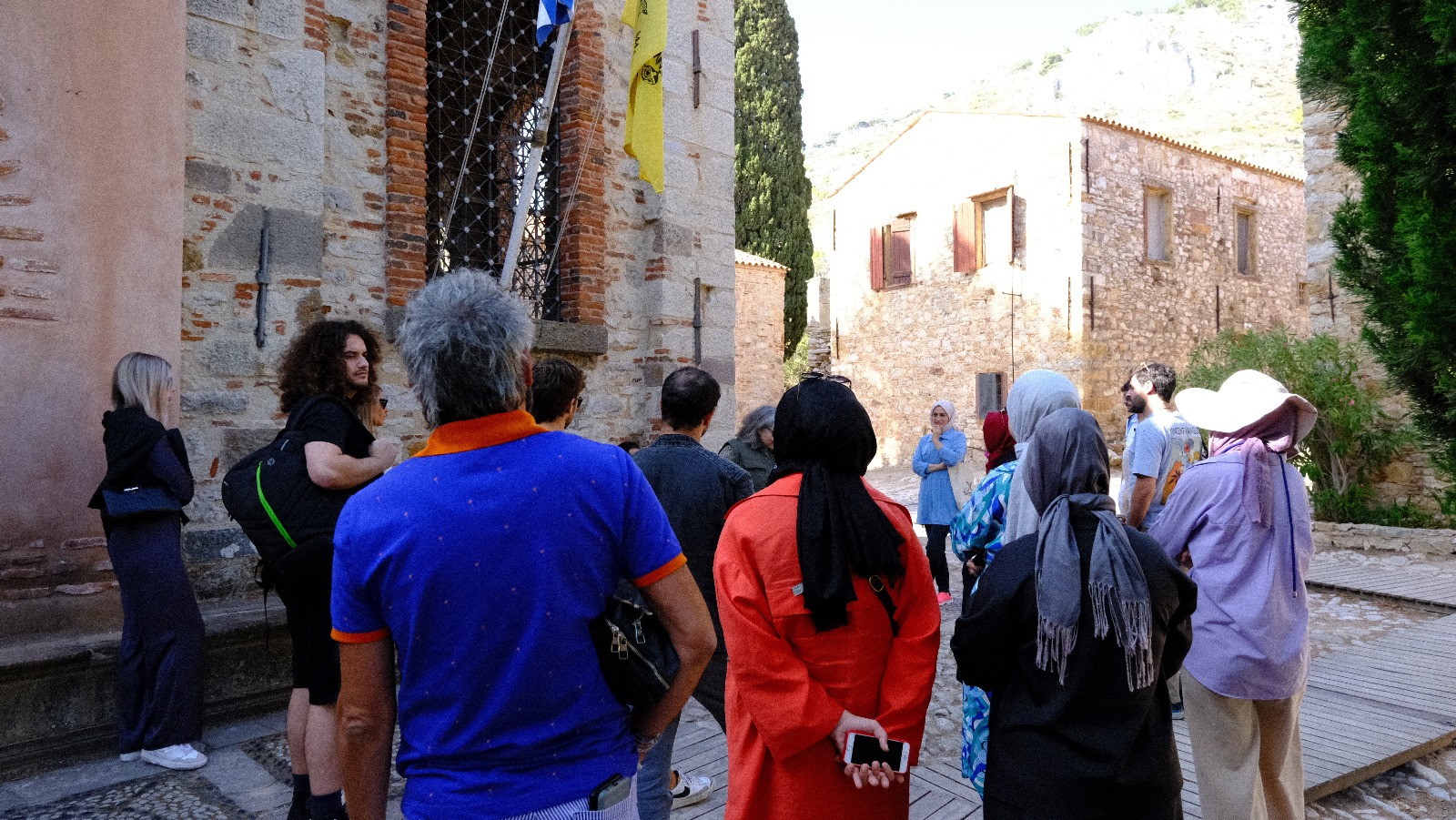
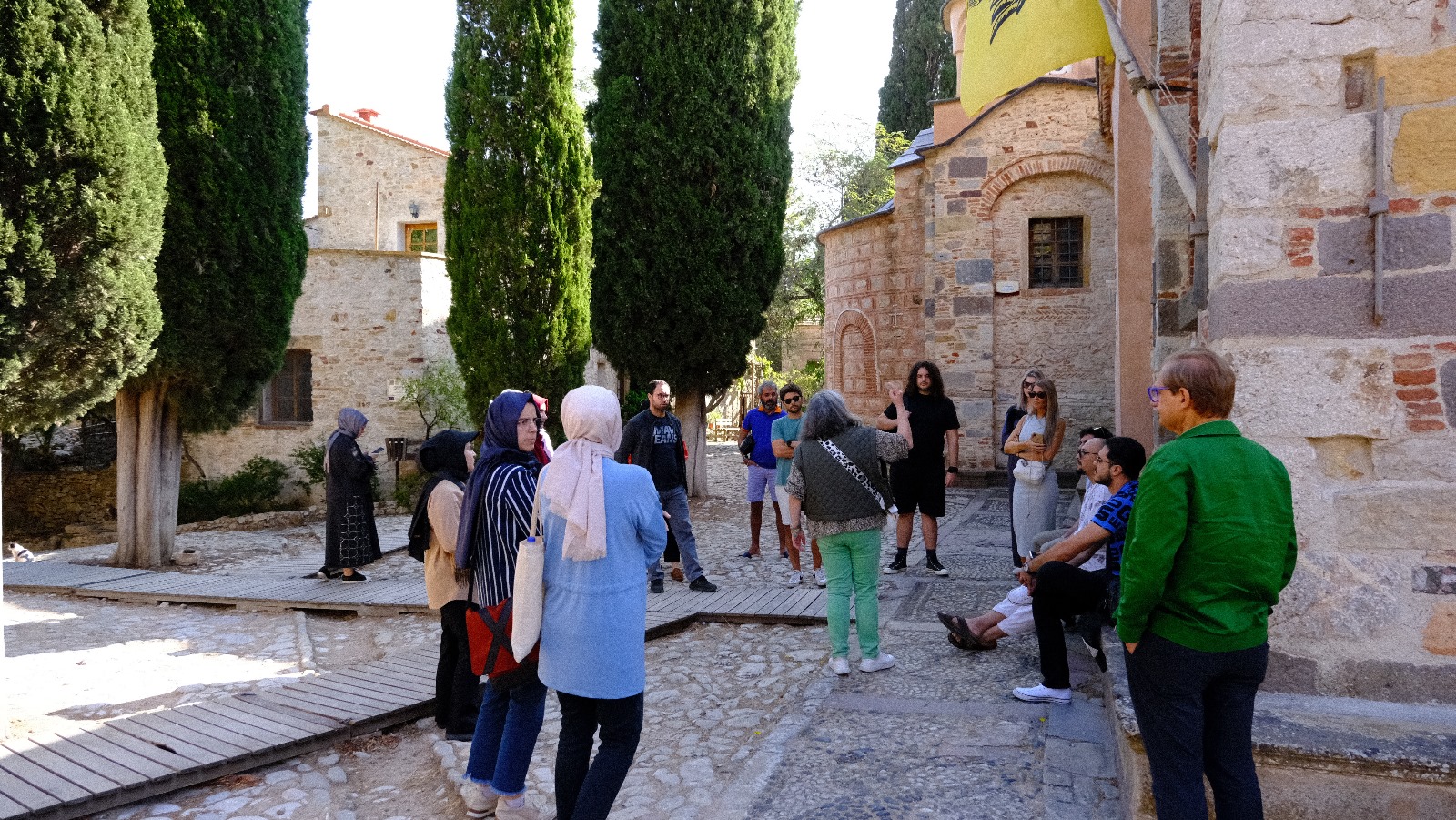
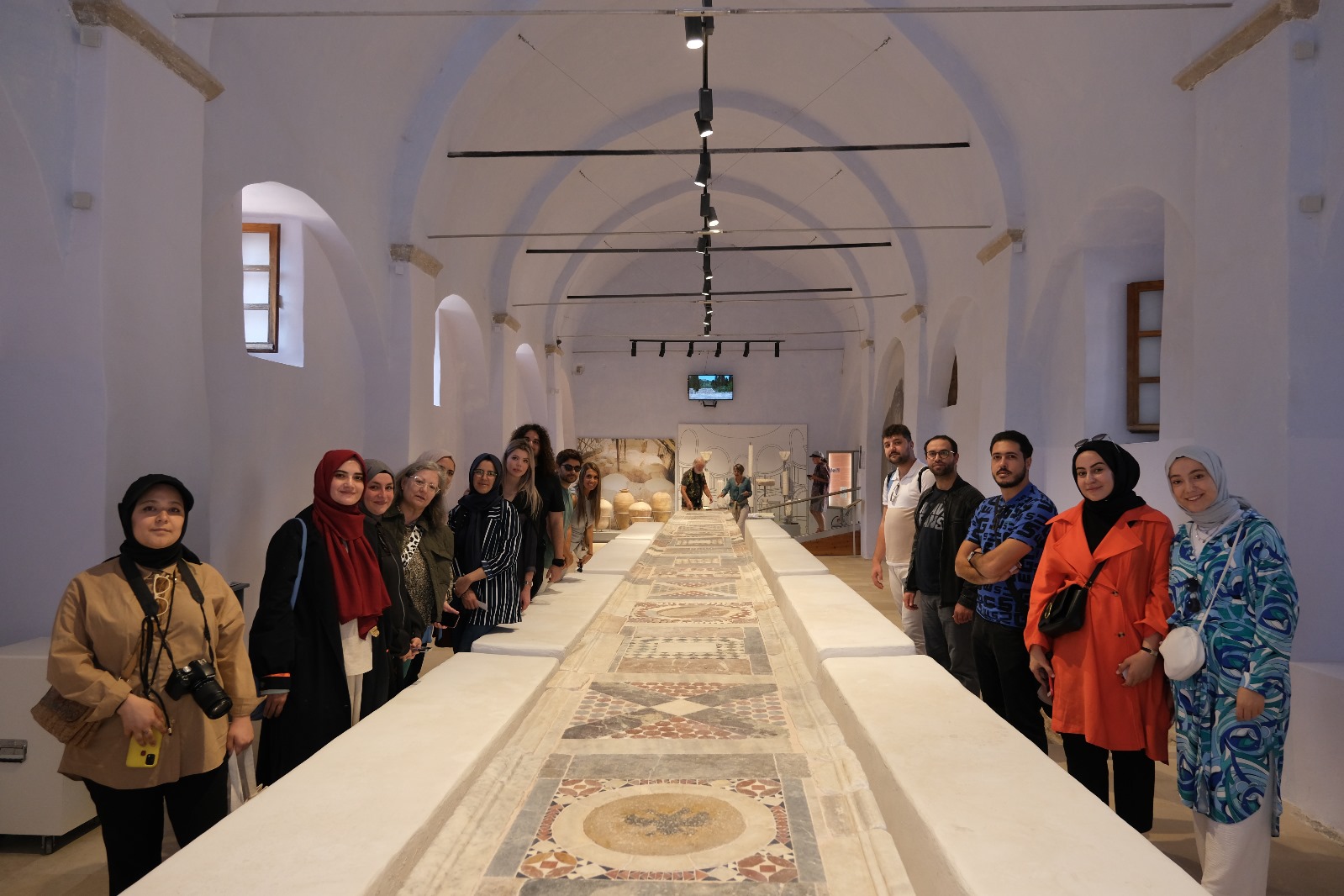



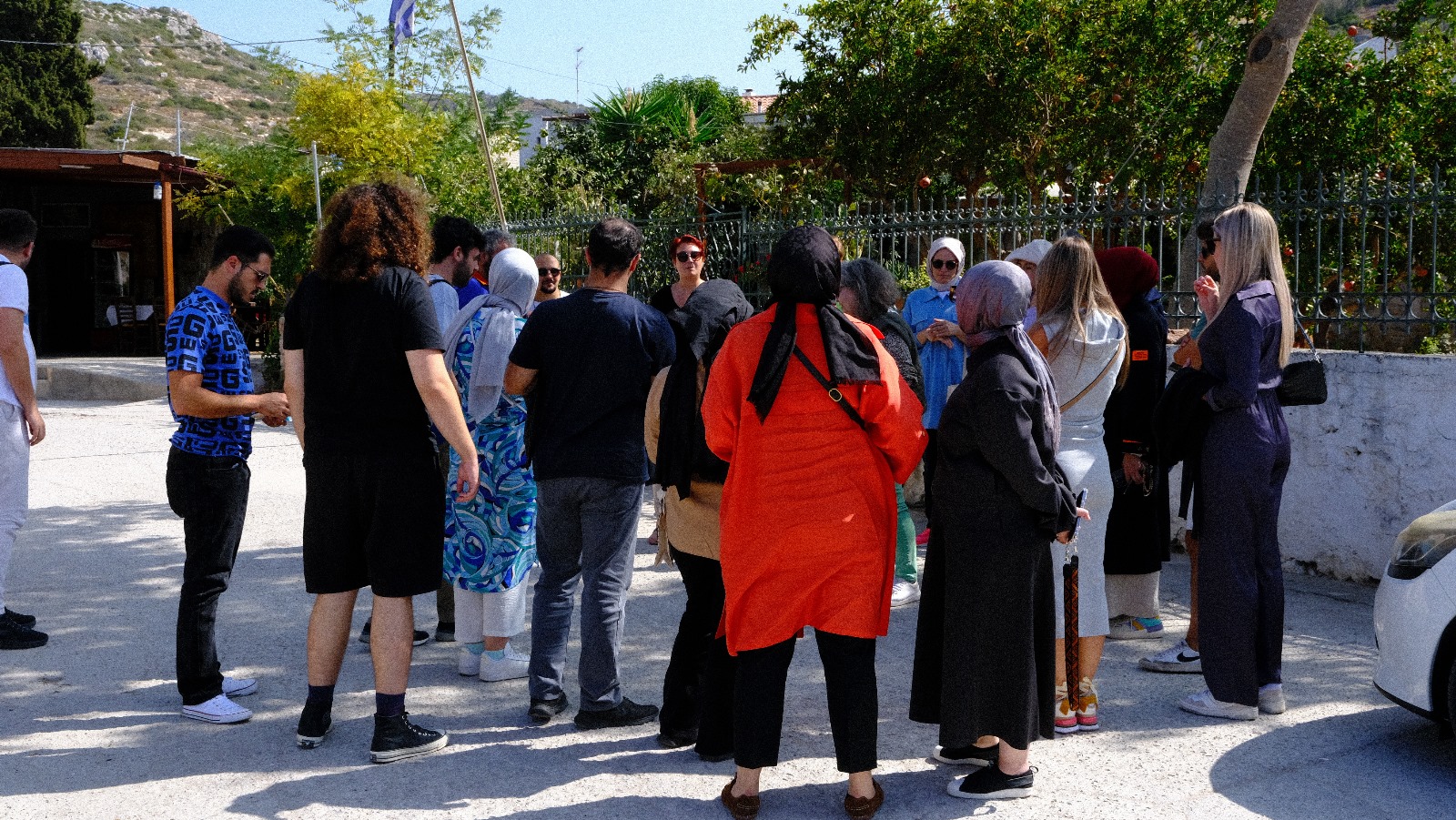

HERITAGE SIGNIFICANCE METHODOLOGY: LETHAL AFFAIRS MENTIMETER GAME
Participants learned about the Heritage Significance Methodology, based on UNESCO Operational Guidelines and the ICOMOS ENAME CHARTER.
The methodology aimed to familiarize participants with cultural value concepts and significance methodologies to create memorable experiences.
During the meeting, the participants discussed the application of the Heritage Significance Methodology, in accordance with the UNESCO Operational Guidelines and the ICOMOS ENAME CHARTER, within the framework of the GET2ACTION project. The key elements of this methodology and its impact on the project were explored, as follows:
UNESCO Operational Guidelines and ICOMOS ENAME CHARTER:
The meeting commenced with an emphasis on aligning the project's approach with internationally recognized standards. It was noted that the project was applying the UNESCO Operational Guidelines and the ICOMOS ENAME CHARTER as a framework for understanding and preserving cultural heritage.
Aligning with these guidelines and charters signified the project's commitment to upholding global best practices in cultural heritage preservation and management.
Familiarization with Cultural Value Concept:
Participants were informed that the project involved familiarizing them with the cultural value concept. This process aimed to provide a deeper understanding of the cultural significance of heritage sites and resources.
The discussion highlighted the importance of recognizing the cultural value inherent in heritage sites and the significance of preserving this cultural wealth.
Significance Methodology Instruction:
The meeting proceeded with participants being instructed on the heritage significance methodology. This instruction encompassed the principles and methods used to assess and appreciate the cultural importance of heritage sites.
Equipping participants with the knowledge and tools necessary to assess heritage significance was seen as essential for creating meaningful experiences and contributing to heritage preservation.
Creating Memorable Experiences:
The meeting concluded with an emphasis on the practical application of heritage significance. Participants were encouraged to use their understanding of cultural value and the significance methodology to design and develop experiences that would be memorable and culturally enriching.
The discussion highlighted that the project's ultimate goal was to create experiences that not only acknowledge heritage significance but also enable participants and visitors to connect with and appreciate the cultural heritage on a profound level.
The discussion on the application of the Heritage Significance Methodology emphasized the project's commitment to adhering to international standards and leveraging the methodology to create culturally rich and memorable experiences.
Then we had an onsite training as a form of study visit on designing gamified experiences at cultural heritage sites, museums, and collections. The game, Lethal Affairs Mentimeter Game as part of the training included a mentoring scheme and onsite visits to UNESCO Listed Monuments and Resources and designated cultural ecosystems. Participants from Türkiye, Holland, Greece, Spain, and Cyprus conducted site visits to various cultural sites, including Nea Moni, Medieval Villages, Mastic Museum, and the UNESCO-listed mastiha, and the Kampos cultural ecosystem. Lethal Affairs Mentimeter Game was instrumental in discovering important sites on the Greek island of Chios. The questions included information about the cultural, historical, and social contributions made to the places by people with a historical background who lived there. The aim of this competition is to learn about cultural heritage in an effective way and has the advantages of effective communication and concentration of attention. During the technical trip, trying to physically find the questions related to the places in the competition added experience and made us feel the place.
RESOURCES




